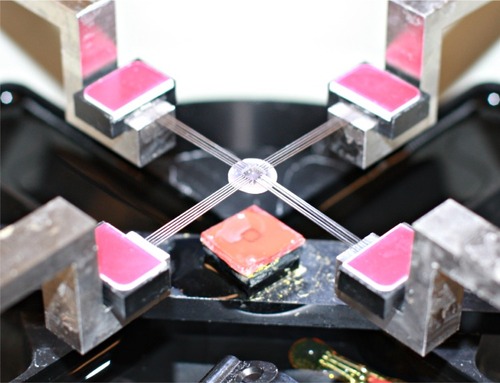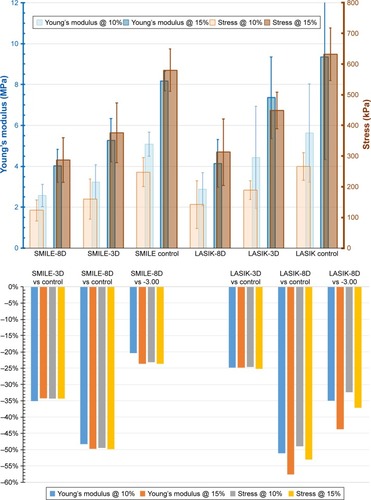Figures & data
Figure 1 Fitting of the corneal specimen on the BioTester device rake battery just prior to testing.

Figure 2 Young’s modulus E linear regression fitting performed on stress–strain curves.
Abbreviation: SMILE, small-incision lenticule extraction.

Table 1 Comparative tensile measurements between the six groups
Figure 3 Summary of biomechanical tensile test differential results per group studied.
Abbreviation: SMILE, small-incision lenticule extraction.

Table 2 Comparative analysis of tensile results
